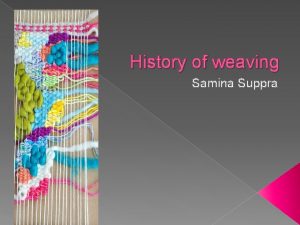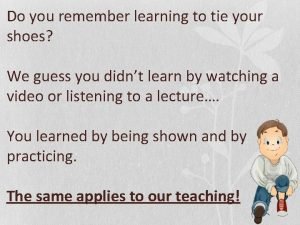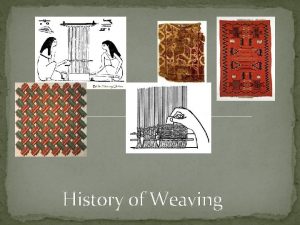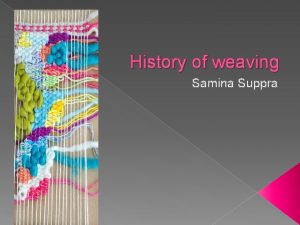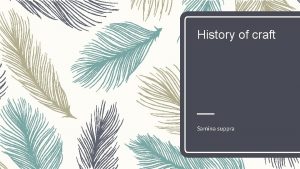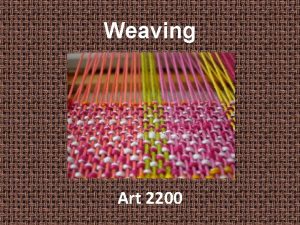History of weaving Samina Suppra Weaving is actually







- Slides: 7

History of weaving Samina Suppra

Weaving is actually interlacement of two yarns known as warp and weft. The tradition of weaving traces back to Neolithic times – approximately 12, 000 years ago. Even before the actual process of weaving was discovered, the basic principle of weaving was applied to interlace branches and twigs to create fences, shelters and baskets for protection. Weaving is one of the primary methods of textile production and it involves interlinking a set of vertical threads with a set of horizontal threads. The set of vertical threads are known as warp and the set of horizontal threads are known as weft.

20, 000 – 30, 000 years ago early man developed the first string by twisting together plant fibers. Preparing thin bundles of plant material and stretching them out while twisting them together produced a fine string or thread. The ability to produce string and thread was the starting place for the development of weaving, spinning, and sewing. Stone Age Man’s early experiments with string and thread lead to the first woven textiles. Threads and strings of different sizes were knotted and laced together to make many useful things. Finger weaving, lacing and knotting together of threads by hand, is still used today by many weavers. During the Neolithic Era mankind developed great skill in weaving cloth. Every household produced cloth for their own needs. Weaving cloth remained an activity associated with the family unit for thousands of years.

First popular fiber in ancient Egypt was flax, which was replaced by wool around 2000 BC. By the beginning of counting the time weaving was known in all the great civilizations. Early looms need one or two persons to work on them. Bible refers to loom and weaving in many places.

Minoan man wearing a kilt that may be made of band-woven strips sewn together, from the tomb of Rekhmire, in Egypt, about 1400 BC


Women did most of the spinning and weaving throughout history, though sometimes men did it, especially if the cloth was fancy and you were going to sell it. Many women made cloth at home, and sometimes they used that cloth to make clothes for themselves and their families. But often they made cloth at home to sell to get money for their family.
